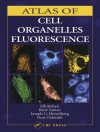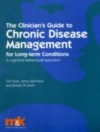Dermatology, the first book in the new Thieme Clinical Companions series, presents the essential information on how to diagnose and treat the full range of dermatologic diseases. Compiled by expert physicians, this pocket guide describes the diagnostic approach and therapeutic options for a wide range of skin diseases. More than 300 full-color illustrations, diagrams, checklists, charts, and clinical tips illuminate all concepts and techniques described in the text. Basic aspects of skin biology and disease pathophysiology are also covered.
To aid quick reference and review, the book is organized into the following color-coded sections:
- Introduction and Diagnosis: A concise overview of the biology and anatomy of the skin, followed by a step-by-step guide to the dermatologic evaluation.
- Dermatologic Diseases: Extensive coverage of skin and hair disorders, with illustrations and essential information for each, including pathogenesis, clinical features, diagnostic approach, differential diagnosis, therapy, and more.
- Therapy: Review of the current information on establishing a treatment plan, including topical, systemic, and radiation therapy, as well as operative dermatology, wound healing, and emergency treatment.
- Useful Appendices: Common systemic medications and commonly used compounding recipes
- Dermatologic Differential Diagnosis: Comprehensive charts (with numerous cross-references) designed to help the reader recognize and fully understand the patient’s signs and symptoms.
All dermatologists, residents, and trainees will benefit from keeping this compact portable guide on hand in the clinical setting.
Tabla de materias
Gray Part: Introduction and Diagnosis
1 Introduction to Skin Biology
1.1 Overview
1.2 Functional Anatomy
1.3 Epidermis
1.4 Hair
1.5 Basement Membrane Zone
1.6 Dermis
1.7 Subcutis
1.8 Neuroendocrine-immune Networking
1.9 Outlook
2 Dermatologic Diagnosis
2.1 Components of the Dermatologic Evaluation
2.2 Description of Skin Findings
2.3 Primary and Secondary Lesions
2.4 Additional Descriptive Terms
2.5 Tools of the Trade
2.6 History
2.7 Histologic Diagnosis
2.8 Molecular Diagnostics
2.9 Mycologic Diagnosis
2.10 Diagnosis of Hair Disorders
3 Other Diagnostic Methods
3.1 Phlebologic Diagnosis
3.2 Allergy Testing
3.3 Light Testing
3.4 Ultrasonography
Blue Part: Dematologic Diseases
4 Viral Diseases
4.1 Overview
4.2 Poxvirus Infections
4.3 Herpesvirus Infections
4.4 Picornavirus Infections
4.5 Cutaneous Manifestations of Hepatitis Virus Infections
4.6 Human Papillomaviruses
5 Bacterial Diseases
5.1 Introduction
5.2 Gram-positive Bacteria: Staphylococci
5.3 Gram-positive Bacteria: Streptococci
5.4 Gram-positive Bacteria: Corynebacteria
5.5 Gram-negative Bacterial Infections
5.6 Miscellaneous Bacterial Infections
5.7 Zoonotic Infections
5.8 Borreliosis
5.9 Mycobacterial Infections: Tuberculosis
5.10 Mycobacterial Infections: Leprosy
5.11 Atypical Mycobacterial Infections
5.12 Actinomycosis
5.13 Nocardiosis
6 Fungal Diseases
6.1 Nomenclature
6.2 Dermatophytes
6.3 Yeasts
6.4 Subcutaneous Mycoses
6.5 Systemic Mycoses
7 Other Infectious Diseases
7.1 Leishmaniasis
7.2 Other Protozoan Infections
7.3 Pediculosis
7.4 Scabies
7.5 Other Epizoonoses
7.6 Worms
8 Sexually Transmitted Diseases
8.1 Overview
8.2 Syphilis
8.3 Endemic Treponematoses
8.4 Gonorrhea
8.5 Other Sexually Transmitted Diseases
9 HIV Infection and AIDS
9.1 Overview
9.2 Cutaneous Manifestations
9.3 Extracutaneous Manifestations
10 Allergic Diseases
10.1 Basic Mechanisms
10.2 Urticaria
10.3 Angioedema
10.4 Food Allergies
10.5 Other Allergic Diseases
10.6 Hyposensitization
11 Drug Reactions
11.1 Overview
11.2 Common Reactions
11.3 Severe Skin Reactions
11.4 Uncommon Reactions
11.5 Drug Pseudoallergies
12 Dermatitis
12.1 Atopic Dermatitis
12.2 Syndromes Associated with Atopic Dermatitis
12.3 Contact Dermatitis
12.4 Other Forms of Dermatitis
13 Collagen–Vascular Disorders
13.1 Classification and Overview
13.2 Lupus Erythematosus (LE)
13.3 Dermatomyositis and Polymyositis
13.4 Morphea
13.5 Lichen Sclerosus
13.6 Systemic Sclerosis
13.7 Pseudoscleroderma
13.8 Mixed Collagen–Vascular Disorders
13.9 Other Rheumatoid Diseases
13.10 Raynaud Syndrome
13.11 Graft-Versus-Host Disease (GVHD)
14 Autoimmune Bullous Diseases
14.1 Classification
14.2 Pemphigus Group
14.3 Pemphigoid Group
14.4 Subepidermal Ig A-mediated Disorders
14.5 Dermatitis Herpetiformis
14.6 Overview of Diagnostic Approach
15 Purpura and Vasculitis
15.1 Overview
15.2 Purpura
15.3 Cutaneous Vasculitis
15.4 Variants of Cutaneous Vasculitis
15.5 Systemic Vasculitis
15.6 Livedo
15.7 Vessel Occlusion and Cutaneous Necrosis
16 Papulosquamous Disorders
16.1 Psoriasis
16.2 Psoriatic Arthritis
16.3 Reiter Syndrome
16.4 Seborrheic Dermatitis
16.5 Pityriasis Amiantacea
16.6 Pityriasis Rubra Pilaris
16.7 Pityriasis Rosea
16.8 Small-Patch Parapsoriasis
16.9 Erythema Multiforme
16.10 Erythroderma
16.11 Figurate Erythemas
16.12 Lichenoid Dermatitis
17 Granulomatous and Necrobiotic Disorders
17.1 Granulomatous Disorders
17.2 Necrobiotic Disorders
18 Dermatoses Caused by Physical and Chemical Agents
18.1 Photodermatoses
18.2 Light-induced Aging and Photocarcinogenesis
18.3 Photosensitive Genodermatoses
18.4 Diseases Caused by Cryoproteins
18.5 Disease Caused by Cold
19 Metabolic Diseases
19.1 Porphyrias
19.2 Disorders of Lipid Metabolism
19.3 Disorders of Amino Acid Metabolism
19.4 Disorders of Mineral Metabolism
19.5 Endocrine Disorders
19.6 Mucinoses
19.7 Cutaneous Signs of Monoclonal Gammopathy
19.8 Gout
19.9 Amyloidosis
19.10 Smoking and the Skin
20 Pruritus and Prurigo
20.1 Pruritus
20.2 Prurigo
21 Genodermatoses
21.1 MIM Code
21.2 The Ichthyoses
21.3 Other Keratinization Disorders
21.4 Palmoplantar Keratoderma
21.5 Linear or Striped Lesions
21.6 Ectodermal Dysplasias
21.7 Epidermolysis Bullosa (EB)
21.8 Diseases of Connective Tissue
21.9 Perforating Dermatoses
21.10 Poikiloderma
21.11 Neurofibromatoses
21.12 Tuberous Sclerosis (TSC)
21.13 Cancer-associated Genodermatoses
22 Disorders of Pigmentation
22.1 Overview
22.2 Hypopigmentation
22.3 Brown Hyperpigmentation
22.4 Blue and Gray Hyperpigmentation
22.5 Reticular Hyperpigmentation and Dyschromatosis
23 Melanocytic Tumors
23.1 Benign Melanocytic Tumors
23.2 Lentigenes
23.3 Melanocytic Nevi
23.4 Malignant Melanoma
24 Cysts and Epidermal Tumors
24.1 Cysts
24.2 Epidermal and Organoid Nevi
24.3 Benign Epidermal Tumors
24.4 Carcinoma in situ
24.5 Malignant Epidermal Tumors
25 Adnexal Tumors
25.1 Overview
25.2 Benign Tumors with Eccrine Differentiation
25.3 Benign Tumors with Apocrine Differentiation
25.4 Benign Tumors with Sebaceous Differentiation
25.5 Benign Tumors with Hair Follicle Differentiation
25.6 Malignant Adnexal Tumors
26 Soft Tissue Tumors
26.1 Connective Tissue Tumors
26.2 Smooth Muscle Tumors
26.3 Tumors of Fat
26.4 Vascular Malformations and Tumors
26.5 Neural Tumors
27 Other Cutaneous Tumors
27.1 Mast Cell Disorders
27.2 Histiocytoses
28 Cutaneous Lymphomas and Leukemia
28.1 Benign Lymphocytic Infiltrates
28.2 Primary Cutaneous Lymphomas
28.3 Primary Cutaneous T-cell Lymphomas
28.4 Primary Cutaneous B-cell Lymphomas
28.5 Leukemia and the Skin
29 Paraneoplastic Disorders
30 Diseases of the Lips and Oral Mucosa
30.1 Inflammation and Leukoplakia
30.2 Leukoplakia
30.3 Lesions of Tongue
30.4 Epulis
30.5 Aphthous Stomatitis
31 Diseases of the Hairs and Scalp
31.1 Alopecia: Overview
31.2 Congenital Alopecia and Hypotrichosis
31.3 Diffuse Nonscarring Alopecia
31.4 Localized Nonscarring Alopecia
31.5 Scarring Alopecia
31.6 Hair Shaft Anomalies
31.7 Hypertrichosis
31.8 Hirsutism
31.9 Diseases of the Scalp
32 Diseases of the Nails
32.1 Introduction
32.2 Congenital Nail Anomalies
32.3 Nail Apparatus Infections
32.4 Acquired Nail Changes
33 Disorders of Sweat Glands
34 Diseases of Sebaceous Glands
34.1 Acne
34.2 Rosacea
34.3 Perioral Dermatitis
35 Diseases of Subcutaneous Fat
35.1 Lipodystrophy and Lipoatrophy
35.2 Panniculitis
36 Anogenital Diseases
36.1 Anal and Perianal Diseases
36.2 Diseases of Male Genitalia
36.3 Diseases of Female Genitalia
37 Phlebology
37.1 Anatomy and Function of Leg Veins
37.2 Varicose Veins
37.3 Inflammation of Veins
37.4 Deep Venous Thromboses
37.5 Stasis Dermatitis and Venous Leg Ulcers
37.6 Phlebologic Surgery
38 Occupational Dermatoses
38.1 Overview
38.2 Occupational Hand Dermatitis
38.3 Occupational Contact Urticaria
38.4 Other Occupational Dermatoses
39 Skin Diseases in Different Age Groups
39.1 Skin Diseases in Pregnancy
39.2 Dermatoses in Childhood
39.3 Geriatric Dermatology
40 Psychodermatology
Red Section: Therapy
41 Topical Therapy
41.1 Overview
41.2 Topical Antiviral Therapy
41.3 Topical Antibiotics
41.4 Dyes and Antiseptics
41.5 Topical Antifungal Agents
41.6 Topical Antiparasitic Agents
41.7 Topical Corticosteroids
41.8 Calcineurin Inhibitors
41.9 Vitamin D Analogues
41.10 Retinoids
41.11 Other Topical Agents
41.12 Sunscreens
41.13 Phototherapy
41.14 Photochemotherapy
41.15 Photodynamic Therapy
41.16 Balneotherapy
41.17 Aesthetic Dermatology
42 Systemic Therapy
42.1 Antiviral Therapy
42.2 Dapsone
42.3 Antifungal Agents
42.4 Antihistamines
42.5 Antimalarials
42.6 Retinoids
42.7 Corticosteroids
42.8 Immunosuppressive Agents
42.9 Biologicals
42.10 Antiemetic Therapy
42.11 Pain Therapy
42.12 Miscellaneous Agents
42.13 Drug Interactions
43 Radiation Therapy
44 Therapy during Pregnancy and Nursing
45 Operative Dermatology
45.1 Principles of Dermatologic Surgery
45.2 Basic Techniques
45.3 Closure Techniques
45.4 Other Techniques
45.5 Laser Therapy
46 Wound Healing
47 Dermatologic Emergencies
Purple Section: Appendices I and II
Appendix I Common Systemic Medications
Appendix II Favorite Compounding Recipes
Green Section
Appendix III Dermatologic Differential Diagnosis
How to Use This Chapter
Differential Diagnostic Lists
Cutaneous Signs of Systemic Disease












